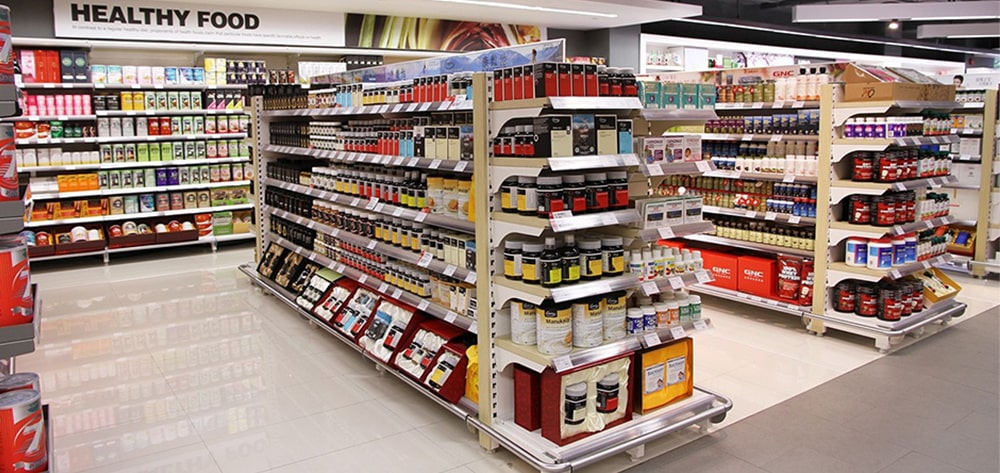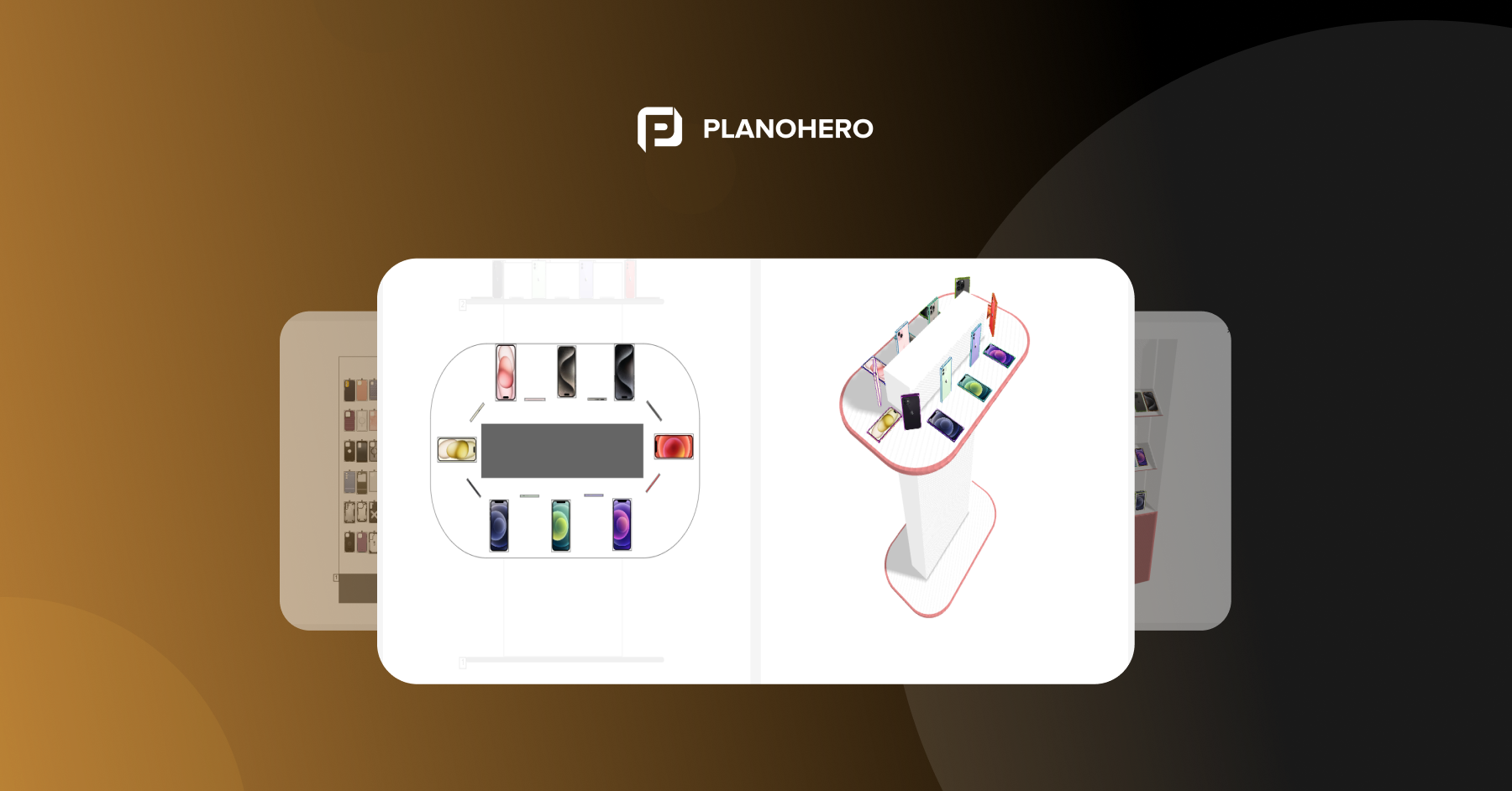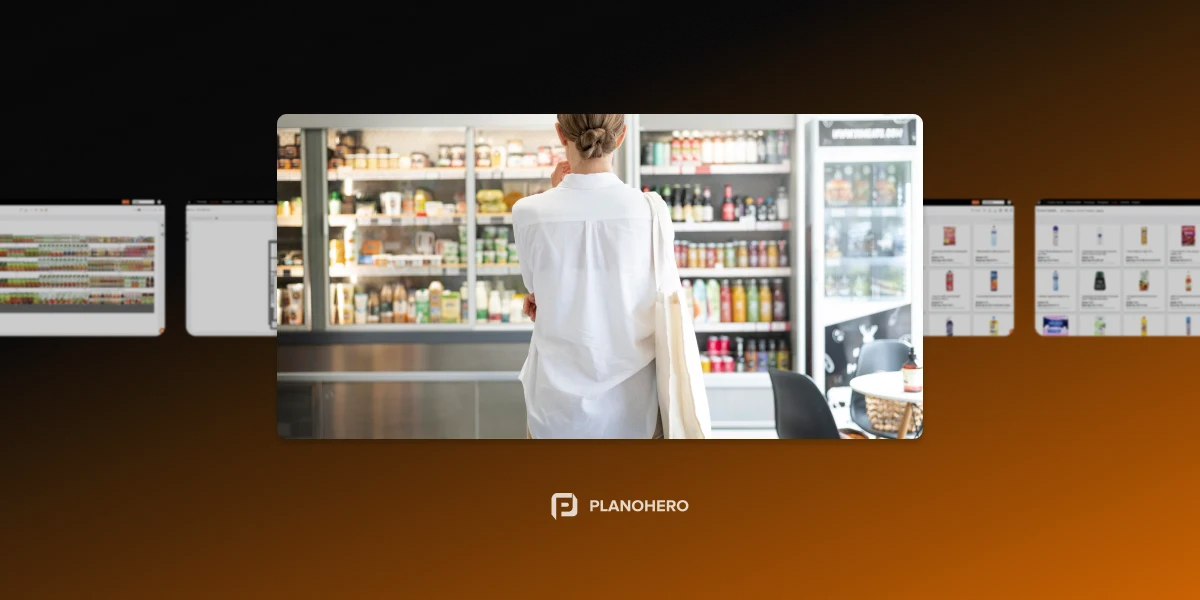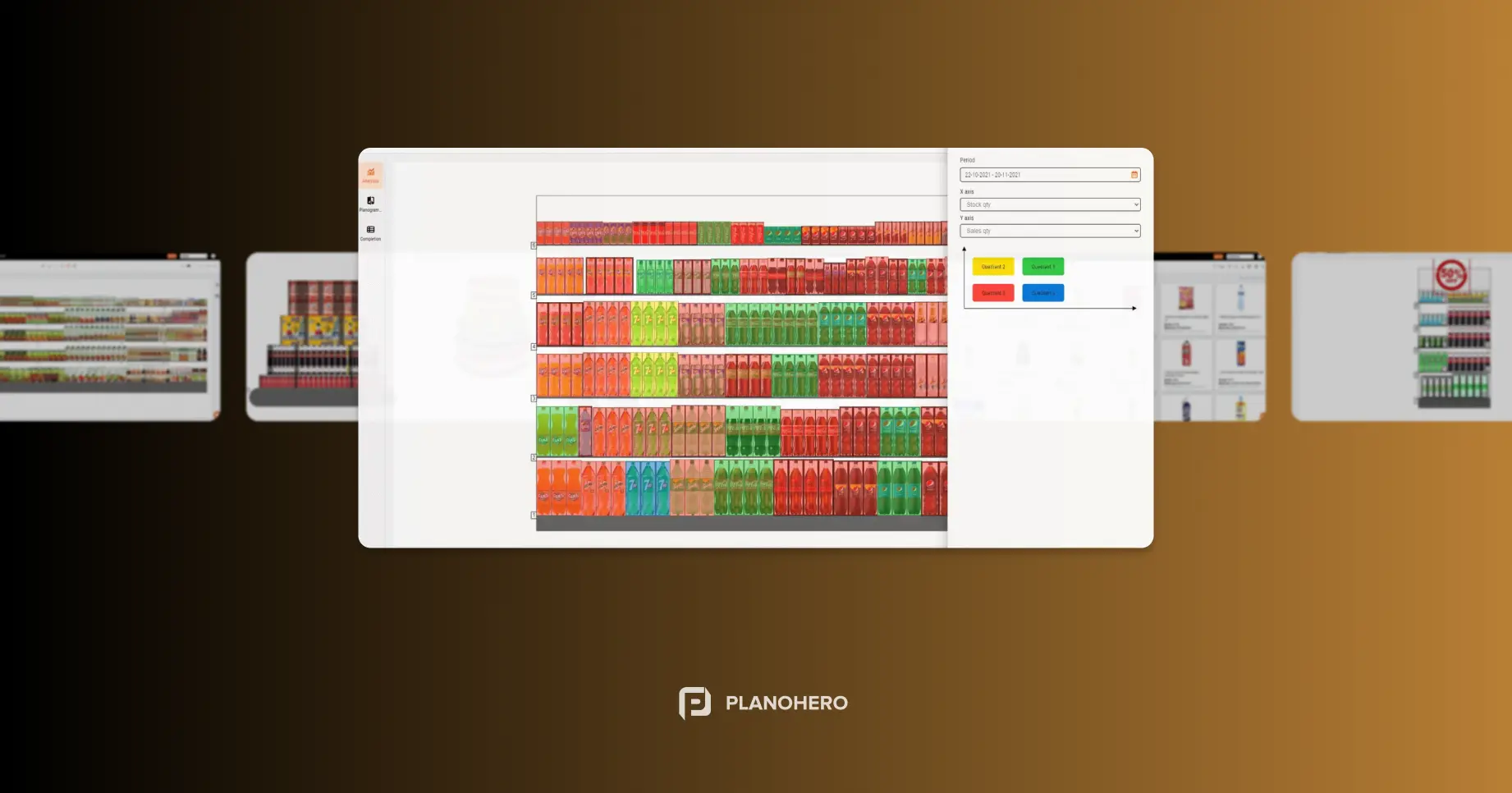
A planogram is a schematic visualization of how goods are placed on the shop equipment in a store.
Retailers need a planogram to control the display and understand how, where, and in what quantity the goods are placed in the store. Also, the planogram helps to analyze and predict the sales of each product.
With the help of planograms, any employee of the merchandising or planogramming department can easily find out all the information about the product, control stocks, and prevent lost sales. Assortment management while using planograms also allows you to plan the purchase of goods and analyze sales.
How to build a store layout?
First, you need to understand the area and plan of the store itself. If there is no ready-made plan, it can be drawn manually using a graphic editor or some retail solution e.g.special planogramming tool - service PlanoHero.
Here you can easily draw all the commercial equipment and virtually place it on the store plan. When the store plan is ready, you can safely take up the layout of the goods on the shelves of racks, showcases, etc. This is the layout of goods on a planogram. Here everything is taken into account to the smallest detail - the dimensions of the racks and goods, the depth of the shelves, and the number of faces.
The Planohero service automatically places products on the planogram, but for this you need to configure the layout, taking into account the parameters of the product, agreements with suppliers, sales figures, basic merchandising rules, and other important characteristics.
Who creates planograms?
Planograms are often the responsibility of the merchandising department or a separate planogramming department. A merchandiser or a planner from the central office of a chain store can create a planogram. After the planogram is created, it is sent to the network stores for execution. The manager in the store receives the layout scheme and places the goods on the shelves according to the planogram.
The planogram helps to manage not only the layout and assortment. It provides an opportunity to establish cooperation with suppliers. Working with the layout scheme, it is convenient for the retail chain and the supplier to coordinate the placement of goods on the shelves.
Why do retail chains need planograms?
With planograms, retailers can determine exactly when and where to apply their merchandise for maximum profit.
1. Analytics.
Without planograms, it's hard to get real value from your point-of-sale data. There is a situation when there is data, but it isn't easy to interpret or analyze it. To solve this problem, you need to combine your sales data with sales space, shelf, and product data using planograms. Thus, a planogram is used to predict changes in sales or profits for an individual product, brand, or entire category.
2. Shelf space.
To get the most out of your data, you need to understand the efficiency of your shelf space. Is there an understanding of how a product is sold in relation to the space it occupies on the shelf? Then how does one justify whether to give this product more or less space?
The best way to make products stand out on the shelves is to create a planogram. It is necessary to study data about the efficiency of shelf space.
3. Selling area.
The way how the trading floor in the store is organized has a direct impact on the customer and can guide them properly to find and buy goods. Therefore, planograms are necessary for an organized and logical arrangement of products.
4. Unity of style in a chain of stores.
Layouts in chain stores without planogram software often differ from store to store. And shoppers intuitively expect to find a similar layout, department layout and display no matter which chain store they go to. Therefore, the corporate identity of the chain stores must be preserved. With the help of planogramming tools, you can centrally manage plans and layouts in all stores of the network.
Planograms are used by large chain stores, supermarkets, pharmacies, and gas stations, as well as small-format stores, convenience stores, etc.
The planogram of a grocery store, a hardware store, or a pharmacy differs in approach to the layout. But they are united by one goal - an effective layout that will increase sales.
Looking for a service to create planograms?
Try a free demo version of PlanoHero




